I've been optimising/benchmarking some code recently and came across this method:
public void SomeMethod(Type messageType)
{
if (messageType == typeof(BroadcastMessage))
{
// ...
}
else if (messageType == typeof(DirectMessage))
{
// ...
}
else if (messageType == typeof(ClientListRequest))
{
// ...
}
}
This is called from a performance critical loop elsewhere, so I naturally assumed all those typeof(...) calls were adding unnecessary overhead (a micro-optimisation, I know) and could be moved to private fields within the class. (I'm aware there are better ways to refactor this code, however, I'd still like to know what's going on here.)
According to my benchmark this isn't the case at all (using BenchmarkDotNet).
[DisassemblyDiagnoser(printAsm: true, printSource: true)]
[RyuJitX64Job]
public class Tests
{
private Type a = typeof(string);
private Type b = typeof(int);
[Benchmark]
public bool F1()
{
return a == typeof(int);
}
[Benchmark]
public bool F2()
{
return a == b;
}
}
Results on my machine (Window 10 x64, .NET 4.7.2, RyuJIT, Release build):
The functions compiled down to ASM:
F1
mov rcx,offset mscorlib_ni+0x729e10
call clr!InstallCustomModule+0x2320
mov rcx,qword ptr [rsp+30h]
cmp qword ptr [rcx+8],rax
sete al
movzx eax,al
F2
mov qword ptr [rsp+30h],rcx
mov rcx,qword ptr [rcx+8]
mov rdx,qword ptr [rsp+30h]
mov rdx,qword ptr [rdx+10h]
call System.Type.op_Equality(System.Type, System.Type)
movzx eax,al
I don't know how to interpret ASM so am unable to understand the significance of what's happening here. In a nut shell, why is F1 faster?
